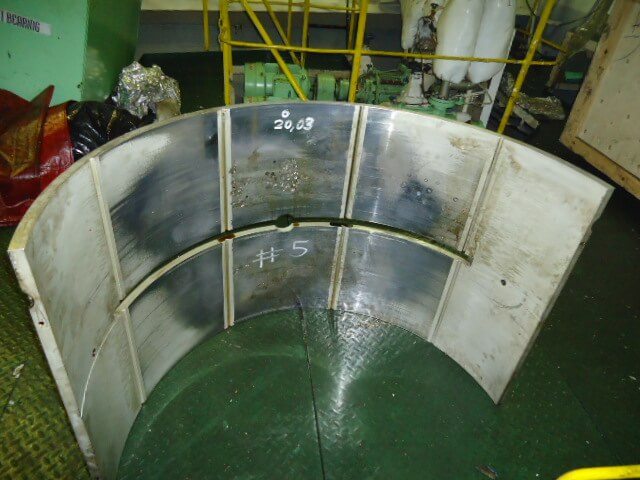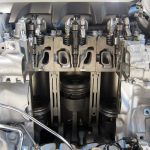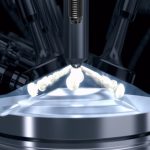The following information would be useful in assessing the possible causes of the failure:
· History of all work carried out on the bearings, to try and establish if any possible pattern or links exist.
· History of bearing clearances, to investigate whether the clearances have been maintained at the correct values.
· Readings of the power developed by the engine, to establish if the engine has been operating at overload.
· Readings of the maximum combustion pressures developed by each cylinder, to establish if the load on the top end bearing has been excessive.
· Readings of the lubricating oil analysis, to determine if the oil condition is acceptable.
Causes of Top End Bearing Failure
Following are the possible causes of top end bearing failure:
1. Wiping of the bearing due to high bearing loads caused by excessive cylinder pressure being developed
2. Insufficient lubricating oil supply due to supply pump failure, failure of the oil piping linkage, oil filter blockage
1. Impurities within the lubricating oil, causing abrasion of the bearing and pin surface
2. Corrosion of the bearing and pin due to oil contamination with acidic products and/or water
3. Wiping of the bearing due to low viscosity of the oil caused by excessive oil temperatures and/or water
4. Insufficient bearing clearances within the bearing, causing excessive oil temperatures and hence low oil viscosity
5. Excessive bearing clearances within the bearing, causing low oil generated pressures due to excessive bearing end leakage
Prevention of Top End Bearing Failure
Prevention of all of the above causes will reduce the probability of future failures. Hence the following procedures would be instigated:
1. Bi- monthly monitoring of all bearing clearances, to ensure these are within normal limits
2. Bi -monthly oil analysis of the oil by the oil manufacturer, to ensure oil quality is ensured
3. Weekly oil tests on-board for water contamination, dirt levels, viscosity and BN levels, to ensure that the oil condition is acceptable.
4. Monthly checks of the lubricating oil low pressure alarm and trip, to ensure that the engine is protected at all times
5. Three times a day recording of the supply oil pressure and temperature, to monitor the supply oil
6. Monthly monitoring of the cylinder pressures using indicator cards, to prevent bearing overload
7. Closely monitor any overhaul and repair work carried out on the bearings to ensure that the correct procedure was being followed, and that the re-assembly was correct
8. Monitor any replacement parts that have been used to ensure they are the correct specification
9. Monthly checks of the general crankcase to ensure all locking devices are still in place.


